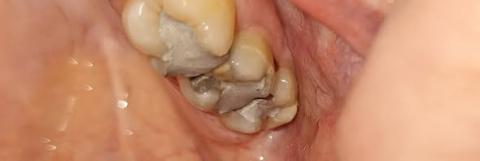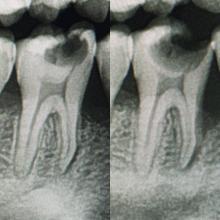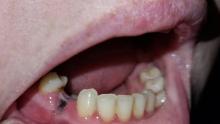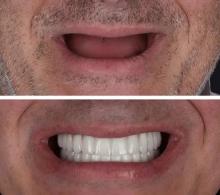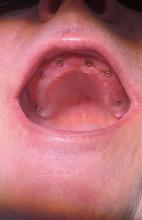Modern Dentistry, Timeless Smiles.
Tooth Pain After Filling: Causes, Healing Time, and What to Do If Your Tooth Still Hurts After 24 Hours
Severity:
Teeth Problems:
1) Short summary of what’s likely happening
After a recent filling, mild sensitivity for a few days is common, especially to hot, cold or pressure. But the combination you describe — pain when drinking (likely thermal or fluid pressure) and a squeaking/grating feeling during chewing — raises a few possibilities:
Likely causes (ranked by probability)
-
High bite (occlusal interference) — if the new filling sits too high it will hit early when you bite, causing sharp pain on chewing and a strange squeak/feeling. This often produces immediate pain with pressure and can be fixed quickly by adjusting the filling.
-
Post-op dentine sensitivity — exposed dentine or stimulation of the remaining nerve can cause pain with cold/hot liquids for several days.
-
Cracked tooth or fracture line — the “squeak” sensation and pain on function can happen if a tooth is cracked; a filling may uncover or worsen a crack.
-
Pulp inflammation (reversible or irreversible pulpitis) — if the nerve is inflamed, you may get lingering sensitivity, pain with temperature or biting; reversible may settle, irreversible may progress to severe pain and require root canal.
-
Cement/rough surface or trapped food — rough surface of the filling or leftover cement/plaque can cause an odd sensation on chewing.
-
Occlusal wear interaction with opposing tooth — if the filling changes the way teeth slide past each other, you can feel a squeak or catching.
2) What to do RIGHT NOW (practical, immediate steps)
-
Avoid hard or sticky foods and avoid chewing on that side until a dentist checks the bite.
-
Take OTC pain relief (ibuprofen/naproxen or paracetamol) per the recommended dose if needed and if you have no contraindications.
-
Rinse with warm salt water 2–3× daily to reduce surface inflammation.
-
Try desensitizing toothpaste (sodium fluoride or potassium nitrate) if you have one — helps with dentine sensitivity over days.
-
Do not poke at the filling with sharp objects. Keep the area clean with gentle brushing.
3) What the dentist will check / the clinical exam
-
Check occlusion with articulating paper — is the filling high? If so, a quick adjustment (1–5 minutes) usually resolves pain.
-
Percussion and bite tests (tapping the tooth, biting on a stick) to localize pain and evaluate a crack.
-
Thermal testing to assess nerve reaction (cold test).
-
Radiograph (periapical X-ray) to check for decay under the filling, periapical inflammation, or a fracture line.
-
Visual inspection under good lighting and magnification for cracks or roughness.
-
Assess contact with opposing/adjacent teeth and check for trapped food or cement.
4) Timeline and realistic healing expectations
-
Immediate fixable cause (high bite / rough surface): relief often occurs within hours to 48 hrs after occlusal adjustment.
-
Dentine sensitivity or minor pulp irritation: often improves in a few days to 2 weeks.
-
Reversible pulpitis: may settle within 1–3 weeks with conservative care.
-
If pulp becomes irreversibly inflamed / infected: pain can worsen over days and often requires root canal treatment (typical timeline → symptoms worsening within days to 2 weeks).
-
If symptoms persist beyond 14 days or get worse (increasing pain, nocturnal pain, swelling), do not wait — see a dentist immediately.
5) If you “wait 14 days” — what can get worse (possible escalations)
-
Progression from reversible to irreversible pulpitis → severe persistent pain, possible need for root canal.
-
Development of dental abscess (swelling, pus, bad taste/odor, fever) — requires urgent treatment (drainage, RCT or extraction, antibiotics if systemic signs).
-
Crack propagation → tooth fracture that may need a crown or extraction depending on extent.
-
Widening of lesion under filling (if decay was missed) → more extensive restoration or root canal.
-
Chronic sensitivity / discomfort requiring redoing the filling or performing further restorative work.
6) When to contact your dentist urgently (go today)
Call your dentist today if any of these occur:
-
Increasing or severe pain not controlled by OTC analgesics
-
Pain that wakes you at night or is constant
-
Swelling of face, gum, or jaw; difficulty swallowing or breathing
-
Pus, fever, or bad taste/odour from the tooth
-
Marked mobility of the tooth or sudden change in bite
If none of those are present but pain and squeaking persist beyond 48–72 hours, book an appointment within a few days to have the bite and restoration checked.
7) Likely fixes the dentist may do
-
Adjust the bite (occlusal equilibration) — very quick and commonly resolves chewing pain and odd sensations.
-
Smooth or polish the filling or remove excess cement.
-
Replace the filling if poorly contoured or leaking.
-
Place a protective liner or desensitizing agent and give home-care instructions.
-
If crack or pulp damage is present — consider crown or root canal therapy.
-
If infection is present — RCT or extraction and possible antibiotics if systemic involvement.

